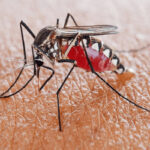A recent study by reputable scientists has revealed an interesting correlation between a child’s birth month and their height and overall health. The research found that children born in June, July, and August tend to have certain advantages in terms of birth weight, bone structure, height, and overall physical well-being.

Do birth months have an impact on height and health?
Scientists from the University of Cambridge analyzed data from 450,000 children and made some intriguing discoveries. They found that children born in the summer months of June, July, and August tend to be born with heavier birth weights, larger bone structures, and generally grow up to be taller and healthier.
This phenomenon is believed to be linked to the amount of vitamin D absorbed during pregnancy and the potential for premature births during these months.
As many know, calcium is essential for bone growth and development. However, the absorption and transportation of calcium rely on the presence of vitamin D. Without sufficient active vitamin D, our bodies can absorb less than 10% of the calcium from our diets!
During spring and summer, with longer days and more sunlight, pregnant women and newborns can absorb more vitamin D, naturally aiding in calcium balance and promoting healthy bone growth.

Birth months can indeed influence a child’s height and overall health.
Additionally, the rate of height growth is typically faster during spring and summer, and the first year of life is a critical period for height development. So, it’s no surprise that children born in these months tend to have a height advantage.
In contrast, autumn and winter days are shorter and colder. Newborns tend to spend more time indoors, potentially exposing them to higher concentrations of indoor allergens and dust mites. This can result in more frequent illnesses, which can impact their height and weight growth.
Interestingly, another study suggests that children born in the summer are more likely to be nearsighted than those born in the winter. Once again, this could be attributed to increased sun exposure during pregnancy and early infancy.
Fetuses can open their eyes around the 26th week of pregnancy. Even though they are still primarily sleeping and feeding, they are already sensitive to light sources outside the womb.
However, it’s important to remember that birth month is not the sole determinant of a person’s future height and health. Genetic factors and upbringing also play significant roles in how a child grows and develops as they age.

Two essential nutrients to prioritize for children’s development
Vitamin D
When sunlight hits our skin, it triggers the production of vitamin D, which in turn enhances the absorption of calcium and phosphorus in the intestines. These minerals are crucial for the development of strong bones and teeth.
Vitamin D not only contributes to bone health but also boosts the immune system and reduces the risk of bone-related issues like osteoporosis and bone deformities in children.

Sun exposure is a natural way to boost vitamin D levels in children.
One of the easiest ways to ensure your child gets enough vitamin D is through sun exposure. Just 20-30 minutes of sunlight before 10 am and after 3 pm each day can provide the necessary vitamin D boost.
In addition to sun exposure, it’s important to include vitamin D-rich foods in your child’s daily diet. Good sources include salmon, tuna, sardines, mushrooms, and dairy products like milk, cheese, and yogurt.
By incorporating these foods into their diet, you can ensure your child gets the vitamin D they need for optimal health.
Vitamin A
Vitamin A is not just crucial for maintaining good vision; it also plays a vital role in promoting height growth. Research has shown that a deficiency in vitamin A can lead to thicker and shorter bones. However, since height growth occurs vertically, it’s essential to ensure your child gets enough vitamin A from natural food sources to promote a balanced and healthy growth pattern.

It’s recommended to provide children with vitamin A through natural food sources.
While children born in June, July, and August may have inherent advantages in terms of height and health, it’s important to remember that other factors also influence their growth and development. Proper parenting, adequate exercise, a balanced diet, quality sleep, and a happy home environment all contribute to a child’s overall growth and well-being.
The Ultimate Guide to Raising a Healthy and Happy Dog: A-Z Tips for Puppy Care and Wellbeing
When it comes to raising a healthy and happy dog, it’s natural to want to avoid those niggling health issues that can impact your furry friend’s well-being. Join us as we explore an A-Z guide to dog care, with expert tips to promote your pup’s growth and overall health. Let’s ensure your beloved canine companion thrives!
Why You Need a Mosquito Bat This Rainy Season
“Mosquitoes are a nuisance and a health hazard, especially during the rainy season when they breed prolifically. It is imperative to take proactive measures to curb their reproduction and eradicate their presence. This rainy season, arm yourself with an effective mosquito bat to keep these pests at bay and ensure the well-being of your family.”





































